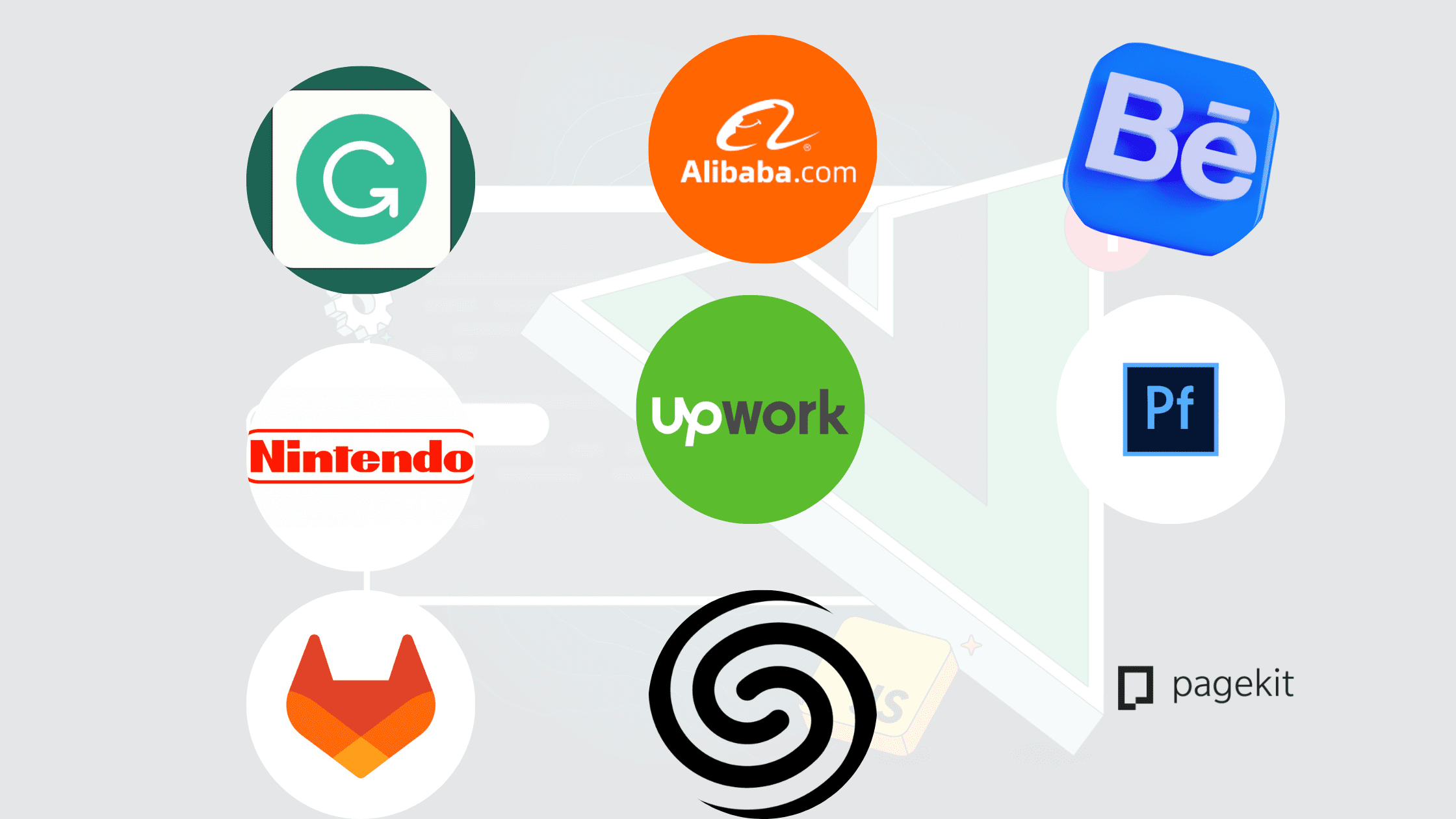What is Vue.js and what are the benefits of Vue.js for Web Development? The open-source, adaptable Vue.js framework allows you to create cutting-edge, quick apps without devoting many resources. We’ll discuss the benefits of Vue.js for web development in this article, which we’ve come to recognize from our own experience, and explain why using it would be a brilliant idea for your upcoming Web app development project.
What is Vue.js?
Vue.js was officially released by Evan in 2014, and it is a progressive JavaScript frontend framework often used to develop User and website interfaces. It is simple to create single-page applications with this framework. Developers use it to develop the View Layer for Web Applications. The primary purpose of Vue.JS is to create the front end or user interface of a software or application.
Reactjs and Angular are gradually losing ground to Vue.JS, emerging as one of the best JavaScript frameworks. While a comprehensive side-by-side comparison is not feasible, let’s examine a few benefits of utilizing the Vue.JS Development Framework.
Benefits of Vue.js for Web Development
Here are some benefits of using Vue.Js for your web applications:
Simple framework
One of the core design principles behind Vue.js is simplicity. The library has a very simple and intuitive API that focuses only on the view layer, making it extremely easy for beginners to quickly get started. At the same time, Vue.js provides all the advanced features needed to build complex single page applications.
This simplicity in the API and design enables faster onboarding of new developers. The abundance of documentation and learning resources further accelerates the learning curve.
Since the API surface area is relatively small, there is very little context switching needed when working with Vue.js, making it easier to retain what has been learnt.
The simplicity also Makes maintenance easier in long term. Apps built with Vue.js tend to require less lines of code compared to more complex frameworks, so there is less code for the developers to maintain. Upgrading between versions is also relatively hassle-free due to commitment to backward compatibility.
Small Size Allows for Faster Page Loads
Vue.js is one of the most lightweight frameworks available, with the minimum runtime size of only 18KB min+gzip. This small footprint results in several key benefits.
Firstly, it leads to much faster initial page load times, improving the user experience on first visit. The small size also allows adding more user interface enhancements without worrying much about the bandwidth.
Secondly, integrating Vue.js into existing projects is much easier due to its little impact on overall bundle size. This makes refactoring legacy apps simpler.
Finally, the smaller size also translates into faster development speeds due to reduced build and compilation times during development.
Easiest frameworks to learn
Vue.js is often called as one of the easiest frameworks to learn. This can be attributed to several factors. Firstly, the API surface area is small so there is less to learn compared complex frameworks. Secondly, the documentation guides you incrementally from basic concepts to advanced usage in a structured way.
Additionally, Vue.js usage can be adopted incrementally – for example using Vue.js just to enhance existing pages instead of rewriting whole app. This incremental adoption means each piece can be learnt in isolation at own pace. Learning materials use simple examples that are practical for beginners. All these factors combined result in beginners finding it very approachable.
For developers familiar with other frameworks like React or Angular, switching to Vue.js becomes easier due to similarities in the programming model. The gradual learning curve entices more developers to try it out and makes eventual large scale adoption much simpler for teams.
Simple Integration Makes Gradual Adoption Easier
Vue.js distinguishes itself from other monolithic frameworks by being designed for gradual adoption from the ground up. Its focus on the view layer makes integration with existing applications much simpler compared to other all-encompassing frameworks.
You can start by using Vue.js on just a small widget on a page written with other libraries like jQuery. As the single page application grows, usage can be incrementally expanded to more pages. This provides flexibility to progressively rewrite and refactor an app at your own pace.
The ability to integrate itself with any build process like webpack, browserify etc also makes it versatile enough to fit different tech stacks. Components can be written as single file components with `.vue.js` extensions for organize code. OR plain JS components can be used for gradual enhancement of legacy codebases.
High Performance Leads to Smoother User Experiences
Vue.js utilizes a virtual DOM, a fast in-memory representation of the actual DOM. When the underlying app state changes, Vue.js intelligently figures out the most efficient way to update the real DOM to match that change.
This use of the virtual DOM combined with other performance optimizations under the hood allow Vue.js powered apps to deliver buttery smooth 60fps animations and interactions – leading to great user experiences.
Vue.js outperforms React and many other frameworks in various performance benchmarks. Real world apps have reported tremendous improvements in overall render times after migrating to Vue.js from legacy stacks. The great performance opens doors for building ambitious interfaces previously not possible.
Reusability
At the heart of Vue.js’s design is the concept of components – self contained, reusable chunks of code encapsulating HTML, JS and CSS tied together. Building apps using this Lego block like mental model pushes developers towards better code structures from get go.
Components have well defined interfaces using `props` to communicate information from parents to children and custom events to inform parents of actions happening inside. This leads to better decoupled architecture where child components focus on presenting information without worrying about all application logic.
This strict separation of concerns inside components paired with ability to nest and reuse them results in applications designed using clean and maintainable interfaces from ground up. The resulting modular architecture remains organized as the app grows while still allowing efficient reusability reducing duplication.
Virtual DOM Modeling and Rendering
Vue.js leverages a Virtual DOM, a lightweight representation of the actual Document Object Model (DOM). This innovative approach optimizes rendering by updating only the components that require changes.
The result is enhanced performance, as the framework minimizes unnecessary manipulations of the DOM. This feature distinguishes Vue.js from traditional frontend frameworks, contributing to a smoother and more efficient user experience.
Integration with Other Frameworks
Vue.js embraces interoperability, allowing it to be effortlessly integrated with other popular frontend frameworks like React and Angular. This flexibility empowers developers to leverage the strengths of multiple frameworks within a single project.
Such compatibility encourages a modular approach, where developers can choose components based on their merits rather than being constrained to a single framework’s ecosystem.
Large Ecosystem Ensures Rich Tooling
The meteoric growth of Vue.js over past years has led to proliferation of thriving ecosystem of diverse tools surrounding it. This rich tooling provides capabilities poweringfull spectrum of development process – from prototyping to debugging, testing to documentation and beyond.
There are fully-featured component libraries like Vuetify, Quasar, Element and more providing readymade UI components conforming to specification. CLI tools like Vue.js CLI handle initializing projects with build tooling and configurations setup for you. Single file component format helps organize code for better readability.
Ecosystem offers integrated state management via Vuex, routing capability using vue-router and ability to make API calls easily using Axios. On top of this, there are helpers assisting documentation, graphing, debugging, testing and basically every aspect of app development.
Bidirectional Data
Unlike other uni-directional frameworks, Vue.js enables bilateral data flows between parent and child components. This means not only can parents update state in children using props but also children can inform parents of events using events and callbacks.
This makes building certain UI patterns requiring communication upstream easier compared to hacking other solutions. Parent components can simply listen for custom events emitted by children to update own state leading to cleaner architecture.
Ability for data to travel both ways makes it simpler to model real world UI interactions requiring communication between components in complex ways not feasible via just cascading data. This leads to flexible yet better abstracted app design.
Timely Support
Vue.js is one of the most starred open source projects on GitHub showing its massive popularity among developers. It boasts a strong community of enthusiasts willing to help others via forums, blogs and more.
The thriving community means questions and issues faced during development can usually find quick solutions either via simple search or asking in forums. Troubleshooting bugs becomes easier when fellow developers share solutions online they may have faced before.
Vue.js creator Evan You provides fantastic leadership focusing on the community. Combined with great documentation, learning resources and overall ecosystem maturity, Vue.js becomes easier to get support at various phases of product development – accelerating time to market.
Applications built with Vue.js
Vue.js is a popular JavaScript framework for building user interfaces, and it has been used to create various applications across different domains. Here are some examples of applications built with Vue.js:
- Behance, a platform for showcasing and discovering creative work, uses Vue.js in its web application.
- Alibaba, the e-commerce giant, uses Vue.js in some of its applications to enhance user experience.
- Grammarly, a popular writing assistant tool, utilizes Vue.js for its front-end interface.
- Nintendo, the gaming company, has used Vue.js to build parts of its web applications.
- GitLab, a web-based Git repository manager, employs Vue.js in its user interface for a smoother user experience.
- PageKit, a modern and lightweight CMS that uses Vue.js in its admin interface.
- Adobe Portfolio, a platform for creating and managing online portfolios, utilizes Vue.js in its web application.
- Laravel Nova, a beautifully designed administration panel for the Laravel framework, is built using Vue.js.
- WizzAir, a European low-cost airline, incorporates Vue.js in parts of its website for dynamic and responsive user interfaces.
- Upwork, a platform for freelancers and clients to connect and collaborate, uses Vue.js to enhance the user interface of its web application.
These examples demonstrate the versatility of Vue.js across different industries, from e-commerce and gaming to productivity tools and content management systems. Vue.js is known for its simplicity, flexibility, and ease of integration, making it a popular choice for front-end development.
Final Verdict
In summary, Vue.js helps build scalable web apps leveraging a design emphasizing simplicity, performance, and flexibility, driving many benefits like faster time to market and great end-user experiences underpinned by an ecosystem that ensures a productive development environment. The opportunities unlocked by choosing Vue make it worthy of serious consideration.
Connect with Canadian Software Agency if you are looking to develop web applications with Vue.js. Our team of experts has 10+ years of experience in creating web applications. We are highly appreciated by our clients. If you have any queries related to web development, please feel free to reach out to us.






